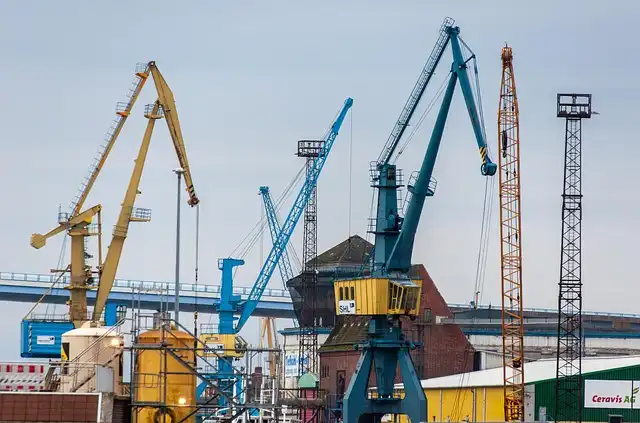China’s Engineering vs. America’s Lawyerly Society: A Comparison

China prioritizes engineering, infrastructure, and rapid development for political resilience, contrasting with America's lawyer-dominated society focused on process and facing infrastructure challenges. China vs USA.
What started as a rehabilitative to nationwide excesses gradually set into behavior. “The lawyerly society grew out of a needed restorative to the USA’ issues of the 1960s,” Wang writes. “Sadly, it has actually become the cause of many of its present problems.”
America’s Shift from Engineering to Law
In the past, America had the musculature of an engineering state, developing mighty jobs throughout the country,” Wang composes. “Prolonged train tracks, beautiful bridges, lovely cities, weapons of battle with awful power, and missions to the moon.” But the building boom slowed down after the 1960s, many thanks to altering public understanding.
China’s Infrastructure-Driven Growth
“China deals with building and construction– high bridges, high-speed rail, gigantic dams– as not only economic stimulation, but likewise as projects to enhance political resilience,” Wang described. “The leadership builds a lot partially since they comprehend that an unbalanced rate of building and construction assists individuals feel like their lives are improving, which sustains the legitimacy of the Communist Party.”
It’s not simply the state– corporate China is just as unrelenting, generating one-third to half of virtually every manufactured excellent in the world, from container ships to steel to photovoltaic panels. “There are 70 million manufacturing workers in China, which is nearly 5 times as numerous as the united state,” Wang told the Blog post.
It’s long been known as among China’s poorest provinces, but in recent years, the area has actually changed. The once-impoverished area had become “the self-styled guitar capital of the world,” composes Wang. “According to state media, among every seven guitars made worldwide is generated in this township.”
Part of the trouble, Wang notes, has been the truth that political leaders required new stops in their districts, requiring the route with an additional mountain range. One more problem is that California rail authority, “favors to promote the variety of high-paying jobs it is creating instead of the quantity of track it has been laying.”
“One of the most important thing that China and the United States share is a dedication to transformation,” he writes. China’s Communist Party has actually sought modernization as an existential goal, with centralized projects targeted at accomplishing “the wonderful restoration of the Chinese nation” by 2049.
It’s likewise at the facility of a few of China’s many enthusiastic infrastructure tasks. The area now has 45 of the globe’s 100 highest possible bridges, 11 flight terminals (with three even more unfinished), 5,000 miles of expressways, and around 1,000 miles of high-speed rail.
The United States has essentially end up being a federal government “of the legal representatives, by the attorneys, and for the attorneys,” Wang creates. In any type of given year, at least fifty percent of Congress holds regulation degrees, while only a handful of members have histories in scientific research or engineering.
The Contrast in High-Speed Rail Development
It’s long been recognized as one of China’s poorest districts, however in current years, the region has actually changed.” Designers have rather literally ruled contemporary China,” Wang creates, noting that previous ultimate leader Deng Xiaoping raised engineers into the top rankings throughout the 1980s and 1990s. No place is the comparison in between China’s engineering state and America’s lawyerly society clearer than in their attempts to develop high-speed trains. At the very same time, China began job on its high-speed line linking Beijing and Shanghai. China opened its line in 2011– three years later on– at an expense of $36 billion.
It’s now a governing approach, with legal representatives standing out at blockage and engineers wandering out of the image. “Americans live today in the damages of an industrial people, whose infrastructure is just hardly kept and rarely broadened,” Wang observes.
China opened its line in 2011– three years later– at an expense of $36 billion. In its very first decade, it brought 1.35 billion traveler journeys. The golden state, by comparison, has invested the previous seventeen years– and $128 billion– building only a short stretch of track in the Central Valley, attaching 2 cities that are neither San Francisco neither Los Angeles.
In spite of America’s existing despair, Wang remains optimistic that the pendulum will swing back. As he informed the Blog post, “Both the American Left and Right value the need to build. Residences are as well pricey, energy costs too much, and our cities function too badly.”
Americans expanded alarmed by the “undesirable spin-offs of growth” Wang composes. The nation “soured on the idea of broad submission to United state technocrats and engineers,” he creates.
The display screen began the heels of a brand-new publication checking out just how the country is currently specified by its enthusiastic building and construction projects and clinical feats– while the United States is stuck in administration and falling behind.
The United States’ dedication is different, more open-ended, and ingrained in the democratic experiment itself. It’s time to revitalize the dream, Wang composes, so that “a government of the people, by the people, and for individuals shall not die.”
Such an addiction on procedure has crowded out results, Wang argues. And it’s made Americans “lose faith that the government can meaningfully enhance their lives.” To turn around that disillusionment, Wang recommends that the U.S. will require to recoup several of its engineering stamina, and maybe just as significantly, bring more non-lawyers into positions of leadership.
That legacy shows up in the sheer volume of what the country constructs. Because 1980, China has actually laid freeways equal to two times the size of the US interstate system, and mounted nearly as much solar and wind power as the rest of the world incorporated.
“Designers have fairly essentially ruled modern China,” Wang creates, noting that previous supreme leader Deng Xiaoping raised engineers right into the top rankings throughout the 1980s and 1990s. By 2002, each and every single participant of the Politburo’s nine-person standing committee had trained as an engineer. General Assistant Hu Jintao researched hydraulic engineering and spent a years building dams; his coworkers concentrated on electron-tube design, thermal design, and various other fields that could have staffed a Soviet heavy-industry empire.
Nowhere is the comparison in between China’s engineering state and America’s lawyerly society more clear than in their attempts to build high-speed trains. At the same time, China started work on its high-speed line connecting Beijing and Shanghai.
“China is a design state, developing large at breakneck rate, unlike the USA’ lawyerly culture, blocking every little thing it can, poor and good,” writes Dan Wang in “Breakneck: China’s Quest to Designer the Future” (W. W. Norton & Business), out currently. This raw differences in between the superpowers might very well “define the 21st century,”
Modern China vs US
China, meanwhile, looks today much like the United States did a century back, when America was proving itself as a superpower via steel, railroads, and high-rises. Because modern-day China embraced the designer’s blueprint as its regulating ideology, and it’s.
That disillusionment generated a new class of leaders. Regulation students started establishing ecological organizations around the rallying cry of “Sue the bastards!” (referring to government companies). With the 1970s, lobbyists on the Left, from Ralph Nader on down, made an objective of declaring lawsuits and watchdogging the federal government, while conservatives took part from the other direction.
1 AI development2 China
3 Engineering
4 Infrastructure
5 Lawyers
6 United States
« Book Sales Surge: Katabasis Tops Charts, New Releases DominateMigration, Loss, and Feminist Peace: Raaza Jamshed’s ‘What Kept You?’ »
